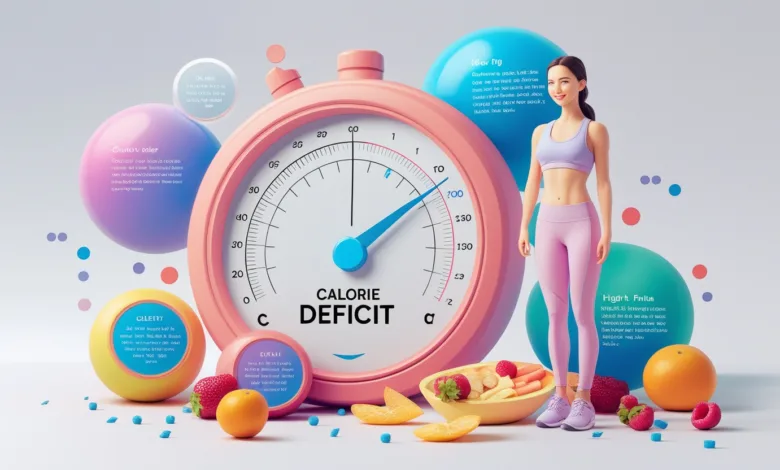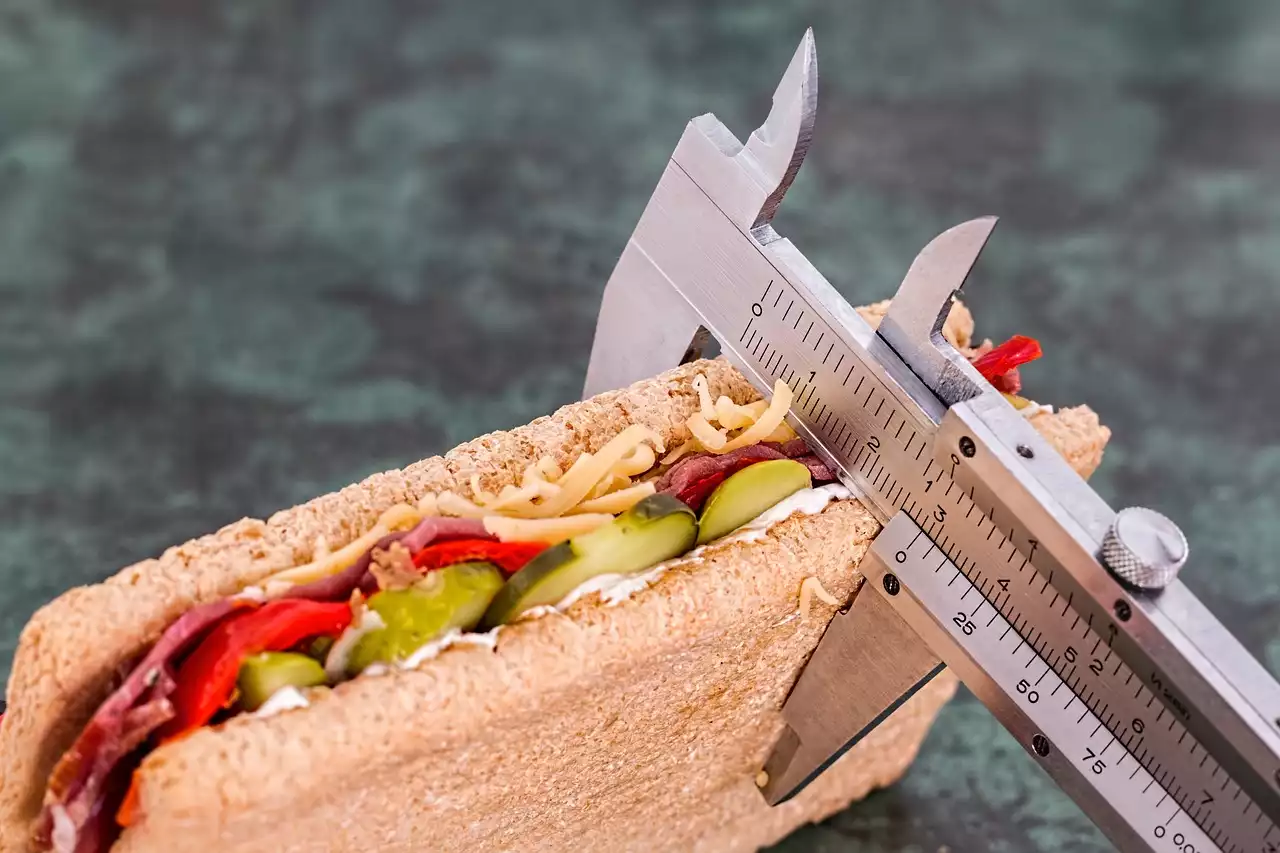Understanding the science of calorie deficit for weight loss

Are you struggling to lose weight despite following a strict diet and exercise regimen? Have you heard about the calorie deficit theory but are unsure about how it works? Understanding the science behind calorie deficit is crucial for effective weight loss. In simple terms, calorie deficit means consuming fewer calories than the body needs to maintain its current weight. This leads to the body burning stored fat for energy, resulting in weight loss. However, there’s more to it than just reducing calorie intake – the quality and timing of meals, exercise routine, and sleep patterns are all factors that affect the calorie deficit equation. In this article, we’ll delve deeper into the science of calorie deficit and provide tips on how to create a sustainable weight loss plan that works for you. So, let’s get started on this journey towards a healthier and happier you!
The Science Behind Calorie Deficit and Weight Loss
To understand how calorie deficit works, we need to know the basics of energy balance. The human body requires energy to carry out its functions, such as breathing, circulating blood, and digesting food. This energy comes from the food we eat, which is converted into glucose – the primary fuel for our cells. The excess glucose is stored in the liver and muscles as glycogen, and the rest is converted into fat and stored in adipose tissue.
The number of calories we need to maintain our weight depends on several factors, including age, gender, weight, height, and activity level. When we consume fewer calories than our body needs, it creates a calorie deficit. This deficit forces the body to tap into its stored energy reserves to make up for the shortfall.
The stored energy reserves that the body uses are primarily fat cells. These cells break down into fatty acids and glycerol, which enter the bloodstream and are used by the body for energy. As we continue to maintain a calorie deficit, the body will continue to use stored fat cells for energy, leading to weight loss.
How to Calculate Your Calorie Deficit
Calculating your calorie deficit is essential to create an effective weight loss plan. The first step is to determine your basal metabolic rate (BMR), which is the number of calories your body burns at rest. Several calculators online can help you determine your BMR based on your age, gender, weight, and height.
Once you know your BMR, you can use it to calculate your daily calorie needs. To lose weight, you need to consume fewer calories than your body needs. A safe and effective rate of weight loss is one to two pounds per week, which translates to a calorie deficit of 500 to 1000 calories per day.
For example, if your BMR is 1500 calories, you need to consume 1200 to 1000 calories per day to create a calorie deficit of 500 to 1000 calories. However, it’s important to note that consuming too few calories can be harmful to your health and lead to muscle loss, nutrient deficiencies, and a slower metabolism.

Understanding Your Basal Metabolic Rate (BMR)
Your basal metabolic rate (BMR) is the number of calories your body burns at rest – that is, the number of calories your body needs to carry out its basic functions such as breathing, circulating blood, and digesting food. Your BMR accounts for about 60 to 70 percent of your daily energy expenditure.
Several factors influence your BMR, including genetics, age, gender, weight, and height. Men typically have a higher BMR than women due to their larger muscle mass. As we age, our BMR decreases due to a decrease in muscle mass and a slower metabolism.
There are several ways to increase your BMR, including strength training, increasing protein intake, and staying active throughout the day. Strength training helps build muscle mass, which increases your BMR, even at rest. Protein has a higher thermic effect of food, which means it requires more energy to digest, leading to a higher BMR. Staying active throughout the day, such as taking frequent breaks from sitting and walking, can also increase your BMR.
Creating a Calorie Deficit Plan
Creating a calorie deficit plan involves more than just reducing calorie intake. To create a sustainable and effective weight loss plan, you need to consider the quality and timing of your meals, exercise routine, and sleep patterns.
First, focus on the quality of your meals. A calorie deficit plan should still provide your body with the nutrients it needs to function optimally. Aim to include whole, nutrient-dense foods such as fruits, vegetables, lean proteins, and healthy fats in your diet.
Next, consider the timing of your meals. Eating smaller, frequent meals throughout the day can help keep your metabolism revved up and prevent overeating. Aim to eat every three to four hours and keep your portion sizes in check.
Exercise is also an essential component of a calorie deficit plan. Exercise helps burn calories and build muscle, which increases your BMR. Aim to incorporate both cardio and strength training exercises into your routine for optimal results.
Lastly, sleep is crucial for weight loss and overall health. Lack of sleep can disrupt hormones that regulate appetite and metabolism, leading to weight gain. Aim to get at least seven to eight hours of sleep per night to support your weight loss efforts.
Combining Calorie Deficit with Exercise
Combining calorie deficit with exercise is the most effective way to lose weight and keep it off. Exercise helps burn calories and build muscle, which increases your BMR. Strength training can be especially helpful in building muscle and increasing your BMR.
Cardiovascular exercise, such as running, cycling, or swimming, is also effective in burning calories and improving cardiovascular health. Aim for at least 150 minutes of moderate-intensity exercise per week or 75 minutes of high-intensity exercise per week.
It’s also essential to vary your exercise routine to prevent boredom and plateauing. Incorporate different types of exercises, such as yoga, Pilates, or dance, to keep your body challenged and engaged.
Tips for Sticking to Your Calorie Deficit Plan
Sticking to a calorie deficit plan can be challenging, but there are several tips that can help make it easier.
First, plan your meals and snacks in advance. Meal planning can help prevent impulsive eating and ensure that you have healthy options available when hunger strikes.
Next, practice mindful eating. Pay attention to your hunger and fullness cues, and eat slowly and mindfully. This can help prevent overeating and promote better digestion.
Find a support system, whether it’s a friend, family member, or online community. Having someone to hold you accountable and provide encouragement can make all the difference in sticking to your plan.
Lastly, be patient and kind to yourself. Sustainable weight loss takes time, and it’s essential to celebrate small victories along the way. Remember that setbacks are normal and part of the journey.
Common Mistakes to Avoid When Creating a Calorie Deficit Plan
When creating a calorie deficit plan, it’s important to avoid common mistakes that can hinder your progress.
First, avoid consuming too few calories. Consuming too few calories can slow down your metabolism, leading to muscle loss and nutrient deficiencies.
Next, avoid relying solely on cardio for weight loss. Strength training is crucial for building muscle mass, which increases your BMR and leads to long-term weight loss.
Avoid comparing your progress to others. Everyone’s weight loss journey is unique, and progress can vary from person to person. Focus on your own progress and celebrate your achievements.
Lastly, avoid unrealistic expectations. Sustainable weight loss takes time, and it’s important to have realistic expectations for your progress.
Tracking Your Progress and Adjusting Your Plan
Tracking your progress is essential for staying motivated and making adjustments to your plan as needed. There are several ways to track your progress, including weighing yourself regularly, taking progress photos, and measuring your body fat percentage.
If you’re not seeing progress, it may be time to adjust your calorie deficit plan. Consider increasing your exercise routine, reducing your calorie intake, or seeking the help of a registered dietitian or personal trainer.
It’s also essential to listen to your body and adjust your plan accordingly. If you’re feeling fatigued or run down, it may be a sign that you need to increase your calorie intake or take a break from exercise.






